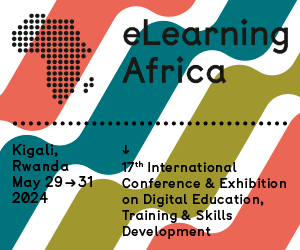At several instances, there has been a notion that some people are inherently “math people,” possessing natural affinity for mathematics. This belief has led to the development of stereotypes, with some students being labeled as either “mathematically inclined” or “mathematically challenged.”
Two quick questions…
- What are the attributes of a “Math Person”?
- How does one become a “Math Person”?
Numerous studies have shown that mathematical ability is not solely determined by one’s innate characteristics but is rather a product of diverse elements that influence one’s mathematical journey. Some individuals may indeed have an affinity for mathematics (which is dependent on some factors), but this predisposition alone does not guarantee success. It is essential to recognize that anyone can become proficient in mathematics with the right conditions, support, and mindset.
The myth has been further backed up with being “left brained” or “right brained”.
The concept of being “left-brained” or “right-brained” refers to the popular belief that individuals have a dominant hemisphere in their brain, which influences their cognitive strengths and learning preferences.
According to this theory, “left-brained” persons are believed to be more analytical, logical, and inclined towards subjects like mathematics, while “right-brained” persons are considered more creative, intuitive, and less inclined towards mathematical tasks.

While my focus in this article is not on how to identify “left brained” or “right brained” persons/students, labeling a person/student as “math person” as a result of being “left brained” is a wrong conclusion.
The notion that being “left brained” automatically equates to mathematical prowess, while being “right brained” inhibits mathematical ability, is an oversimplification and lacks scientific evidence.
Mathematical proficiency relies on a combination of skills, such as logical reasoning, spatial awareness, working memory, and problem-solving, which are not confined to a single hemisphere.
Allow me to shed more light on how to leverage on the strengths of both sides of the brain for a holistic approach to mathematical proficiency.
When we look at the percentages of how much we learn through each sense, the breakdown looks like this:
- Taste: 3%
- Smell: 3%
- Touch: 6%
- Sound: 13%
- Sight: 75%
Left brain – Right brain
Everybody has a left brain and a right brain, and we all use both sides. However, most people use one side more than the other. This hemispheric dominance affects the way we process information and learn. Learning with both sides helps us make the most of our brains. Incorporating whole brain learning strategies into academic endeavors will address the left-brainers and right-brainers and allow both types to use more of their brains.
In reality, the brain is a highly interconnected organ, and cognitive functions, including mathematical processing, involve the collaboration of various regions and networks across both hemispheres.
The processing in the left brain is linear. This means that learning occurs from part to whole. Processing in this hemisphere is also sequential. The left brain is good at processing symbols and is very logical and mathematical. The left brain also deals with verbal and written inputs and adheres to rules. Left brain processes are reality-based.
The processing in the right brain is holistic. This means that learning occurs by first envisioning the whole picture. Processing in this hemisphere is random. The right brain is also color-sensitive. This hemisphere is good at processing the concrete: things that can be seen, touched, and felt. The right brain is very intuitive and non-verbal. Right brain processes are fantasy-oriented.
Whole-brain learning strategies
No matter which hemisphere of your brain is dominant, keeping both hemispheres actively involved in the learning process will help you make the most of your brain. Here are some tips on creating a whole brain learning environment for yourself:
- Learn in a relaxed environment. The best recall occurs when brain wave patterns show a relaxed state.
- Learn in a multi-sensory environment by involving visual, auditory, and kinesthetic activities.
- Use color! This stimulates the right brain and helps recall.
- Make sure you take breaks often.
- Try to relate what you are learning to a bigger picture.
- Reinforce what you have learnt through practice and review.
In mathematics education, it is more productive to focus on fostering a growth mindset, providing diverse instructional strategies, and creating an inclusive learning environment that accommodates different learning styles and strengths. Rather than categorizing students as “left brained” or “right brained”, it is essential to recognize and nurture their individual abilities, offering opportunities for all learners to engage with and excel in mathematics.
The idea that being a “math person” is predetermined by genetics or inherent talent is a myth that has hindered many students’ progresses in mathematics. Instead, it is crucial to acknowledge the various conditions and factors that contribute to mathematical success. By providing effective instruction, cultivating a growth mindset, creating a supportive learning environment, offering personalized instruction, and promoting early exposure to math concepts, we can empower all students to unlock their mathematical potential.
Every student has the capacity to develop proficiency in mathematics with the right support, encouragement, and opportunity. It is time to debunk the myth of “being a math person” and pave the way for a more inclusive and equitable mathematical education for all.











